Camping is a fun and exciting group activity you can perform all year round even during wintertime. Camping with family and friends in snow inculcates patience, hard work, discipline, and independence. Also, winter camping has a lot of perks, such as less crowded campsites and fewer pests or unwanted animals loitering around. It's a good idea to equip yourself with the right information on how to camp in the winter so you're fully prepared for this unique and enjoyable outdoor adventure.
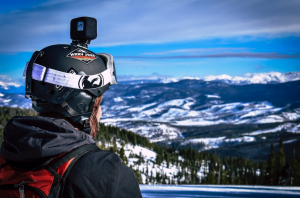
One crucial aspect to consider before finalizing your next camping adventure is preparing your must-have camping gear. Your health and safety should be your priority.
Also, choosing the right winter tent will keep you warm while enjoying your camping experience.
In this post, you'll learn how to make your winter camp a perfect place to bond with family and friends. Let's get started!
What Are the Best Winter Camping Tips
Unlike summer or spring when the weather is perfect for camping, the snow and cold weather during winter can make you uncomfortable without the right gear, tools, supplies, and equipment ready. So, what are the things you need to keep in mind to make your camping smoother and enjoyable during winter? Let's find out!
- Choose a camping area that is free against the dangerous avalanche and sheltered from strong winds. You need to pack down the snow to prepare the tent site.
- Invest in high-quality cold weather tents to keep you warm when sleeping inside because these tents are insulated tents. Also, your vehicles need to be protected against elements, so it’s also important to check the best SUV tent for camping that you can also use during the winter season.
- Cold weather sleeping bags will keep you warm and comfortable during the night while you and your companions are asleep.
- Eating quick to cook and easy to eat foods with high calories will keep you warm. Don't forget to bring a bottle filled with hot water too. Make sure you're hydrated throughout the day to avoid getting sick in the camp.
- Equip yourself with the right winter camping gear to avoid frostbite, hypothermia, and other cold injuries. The warmer clothes you can bring include a puffy coat, a waterproof jacket, fleece pants, and mid-weight base layers. Also, make sure you bring warm socks, gloves, a hat, and sunglasses.
How to Camp In Winter and Make a Camp in the Snow
Camping in the snow is totally different from summertime camping, but you can get the most out of this unique experience by having an insulated tent to keep you warm. Once you reach your camping destination, take some time to eat, relax, and put additional warm clothing before unpacking all your stuff. Also, it's important to keep these important things in mind:
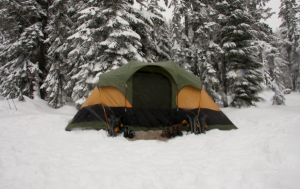
- Check the availability of a water source.
- Find a good spot with adequate wind protection such as trees for a comfortable camping experience. But avoid setting up underneath damaged or unstable trees.
- Avoid setting up your tent on vegetation. Set u[ in an established campsite with bare ground or on the snow. Don't set up a camp below a slope because of avalanche risk.
- Loose snow is uncomfortable for sleeping because it melts by the body temperature, so packing down the snow will help prevent this from happening. You can stomp in your boots or walk around with snowshoes.
- Reduce the wind impact by building a wall of snow around your insulated tent. You can do this by digging out the snow several feet down for the tent and vestibule. However, avoid completely sealing the tent for proper ventilation.
- Only use stakes that are designed for snow camping because standard stakes won't survive in the snow.
- Make a good cooking surface by digging out and shaping the snow. Also, you can make tables, seats, and storage cabinet too!
Winter Camping Gear
You need to always be prepared for the worse by bringing medications and first aid kit. Also, wearing the right camping gear will provide good body protection, which makes a big difference in your camping journey.
When it comes to extreme camping, like winter camping, you need to stay warm and dry at all times to prevent cold injury. Remember that you'll be exposed in the cold for several days. So, what are the things you need to prepare to keep you warm and dry? Let's find out!
1. What Is Basic Winter Camping Gear
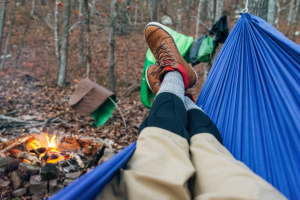
Your basic camping gear should include a survival tent, sleeping bag, sleeping pad, and a backpack. In short, these are the major winter camping gear you need to prioritize preparing beforehand.
Choosing a camping gear that is made of high-quality materials and construction must be done to ensure a safe and enjoyable snow camping experience.
So let’s check what you need to consider when choosing the right winter camping gear for you!
- Survival Tent: Winter camping tents come in different types and sizes. Backpacking tents work if you are making a camp below the tree line in a fair weather condition. A four season tent is highly recommended for heavy snowfall and high winds because they have heavier fabrics and sturdier poles.
A 3-person tent is ideal for two people with enough room to stow your gear inside and protect from elements. A jacket tent is also another great option to keep you warm in cold nights.
- Sleeping Bag: It is a good idea to use a sub-zero sleeping bag with a rating of at least 10°F lower than the expected coldest temperature. If it gets too warm, you can always vent your cold weather sleeping bag. It’s worth reading the best bivy sack reviews online so you can choose the right brand for you.
A cold weather sleeping bag has a generous amount of synthetic insulation, so it's a popular choice among snow campers. Behind the zippers of a winter bag, you'll see draft tubes, and above the hoods and shoulders, you'll see draft collars which preserve the heat inside the bag.
- Backpack: Because you need extra gear and more clothes, you need a larger backpack. The minimum for a lightweight load is a 65-liter backpack in 3,967 cubic inches. For heavier load, you need at least an 80-liter backpack in 4,882 cubic inches. As much as possible, pack lightly but make sure you bring your essentials for various winter conditions.
- Sleeping Pad: You need a sleeping pad for cushioning and insulation. Using two full-length sleeping pads will keep your body from losing heat on snowy surfaces. Use a self-inflating sleeping pad on top and a closed-cell foam sleeping pad to the ground to get the best insulation from the cold ground.
Note: The R-value is the rating of sleeping pads that range from 1.0 to 8.0, and the higher the number, the better is the insulation.
2. What to Wear in Snow Camping
You can still attain a certain level of comfort while enjoying the experience of snow camping by wearing the right clothes, footwear, and other winter camping gear. Nothing can stop you from the fun and excitement of camping because you're fully prepared and armed with the right snow camping gear! Check them out!
- Winter Clothing: Your base layer or your underwear should be long for all-around use. For mild conditions, choose lightweight underwear. For below-freezing temperatures, choose heavyweight underwear. Choose fabrics such as wool or polyester which dry quickly and wick sweat away from the skin.
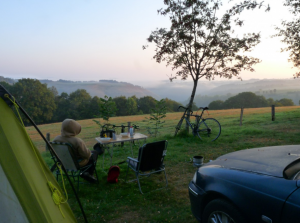
The middle layer is the insulating layer, which is designed to retain body heat. Puffier or thicker fabrics are warmer.
Insulated jacket made of synthetic materials and are puffy is the best for the upper body. Fleece pants can effectively keep your warm legs.
The outer layer should be breathable and waterproof. It is called the shell layer because it provides defense against rain, wind, sleet, and snow. A fully waterproof jacket and pants are required in winter camping.
- Footwear: Using traditional hiking boots is fine with shallow snow or a few inches of snow. However, in deeper snow, waterproof and insulating mountaineering or winter boots are highly recommended.
Use gaiters to prevent the snow from getting inside your boots which also add warmth. For snowboarding and skiing, use the appropriate boots compatible with bindings.
3. What Are the Needed Winter Camp Accessories
- Goggles and glasses: Make sure to protect your eyes against the sun and the wind by wearing goggles or glasses with dark lenses and 0 to 19% visible light transmission or VLT. Light-colored lenses, like gold, rose, amber or yellow can help in enhancing the contrast in cloudy weather.
- Winter hat: Choose basic wool or a synthetic beanie that covers your ears. A face mask or balaclava can help if ever your face gets cold.
- Gloves and mittens: Insulated gloves with waterproof or breathable shells are generally better. Fleece gloves can also provide basic warmth. While your dexterity might be a bit affected, mittens are great to keep your fingers warm.
- Socks: Choose non-cotton socks with appropriate thickness as determined by the fit of your boot.
How to Stay Warm in a Tent
Staying warm in a snow camp will make your life easier. For one thing, don't forget your hot water bottle. A double camp bed can provide you with a level of comfort close to your bed at home. Learn how to stay warm in a tent by checking these tips suitable for car and family winter campers:
- Use extreme weather tents which are specifically designed for winter camping because they have thicker fabrics and stronger and high-grade waterproof materials.
- Choose an extreme cold weather sleeping bag, such as a sub-zero sleeping bag, instead of a regular sleeping bag for better insulation. A silk sleeping bag liner adds extra warmth. You can also use fleece to effectively trap heat which is not delicate like silk. Down insulation is a good investment to keep you warm and toasty.
- Adding a sleeping bag liner or using a bivy sack is a good idea if your sleeping bag is not warm enough. It also minimizes wear and keep the bag cleaner.
- Grabbing an extra layer as soon as the temperature changes and drops during the evening is a must to keep yourself warm. Don't wait until you're already cold because it's too late.
- Engage in some form of exercise or drink warm milk or tea to increase your temperature before you sleep.
How to Insulate a Tent
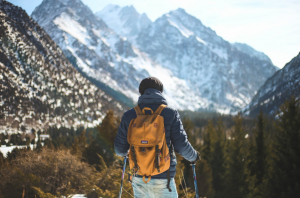
It pays to know how to heat a tent. You can insulate a tent using rugs on the floor or a tent carpet.
They serve as an insulating layer which stops cold from penetrating up the floor. A cold groundsheet can be a source of cold injuries, so find alternative options if you don't have rugs or carpet, like old tarps or inexpensive rag rugs.
Avoid using a massive winter camping tent.
Choose one that will provide enough space for everybody but not too big because the remaining space contributes to the cold inside a tent with only a few bodies.
Polycotton or canvas tents minimize heat loss better for a more enjoyable winter tent camping experience.
When using a portable heater, use it with extreme caution. Don't forget to turn off all types of gas heaters before your sleep. Don't use them for a long period of time. Never use a gas heater inside your tent bedroom. Always follow the safety advice of the manufacturer when using a heater. Better yet, use winter camping tents with a stove.
Conclusion
Camping is always an unforgettable experience for everyone. Winter camping teaches you how to survive in extremely cold conditions which makes you appreciate your life back at home. It makes you realize how lucky you are to benefit and enjoy from the products and services brought about by modern and advanced technology. Planning ahead to make sure you’re able to prepare all the things you need and you’ve researched practical tips on how to camp in winter are vital to happy and successful camping. Enjoy snow camping!
